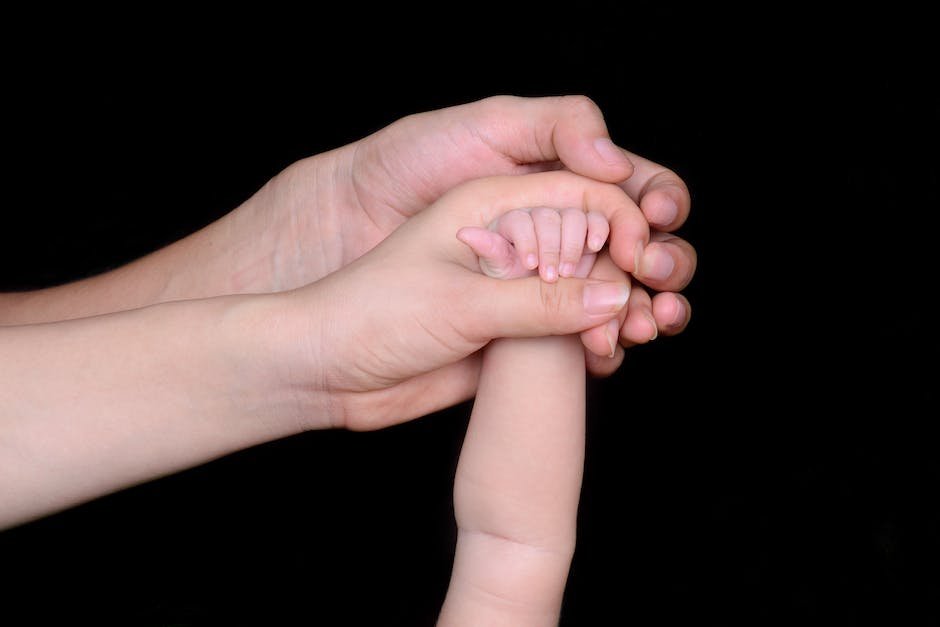
Autism, a complex neurodevelopmental disorder, manifests itself in a myriad of behaviors, one of which could be biting. This action, seemingly drastic, often stems from a dilemma the child faces while expressing his or her emotions. Autistic children may resort to biting as a form of communication, not as a sign of defiance or mischief. Understanding autism and the related behavioral changes, particularly biting, is crucial not only for parents but also for everyone around the child. By recognizing the signs and identifying triggers, immediate intervention can be executed before the situation escalates to biting. This write-up will walk you through various aspects of understanding, dealing with, and preventing biting in autistic children, and will also provide advice on when to seek professional guidance.
Understanding Autism and Biting
Unraveling the Mystery: Why Biting is a Common Behavioral Issue Among Autistic Children
If we take the time to understand the world of children who are on the autism spectrum, we’ll begin to comprehend why behaviors like biting may take root. Rather than labeling it as a problem behavior, it’s crucial to understand the factors that compel these kids to resort to biting, and how parents can address this concern effectively.
The underlying reasons why children on the spectrum might engage in biting are diverse and complex. On the surface, it might seem like a sudden, irrational outburst, but in fact, it is a reaction influenced by a variety of intrinsic and environmental factors.
Emotions, communication & sensory challenges are some of the key reasons that could ignite biting behavior.
Emotionally, children with autism can be likened to pressure cookers. Their inability to express uncomfortable feelings like frustration, anger, anxiety, or even excitement can lead to a build-up of emotions. Biting, in this case, becomes a coping mechanism, serving as an outlet for emotional relief.
On the other hand, communication challenges could also spur biting behavior. Autistic children may lack the necessary verbal skills to convey their needs, wants, or dislikes. Hence, biting can be seen as a non-verbal method of communicating their needs or expressing refusal or discomfort.
Another essential aspect to bear in mind is the sensory challenges autistic children face. Their sensory perception is different from the vast majority of children; they may find certain sensations too overwhelming or too dull. Biting is a sensory-driven behavior that offers various sensations – pressure, pain, and texture – which could suit their sensory seeking or avoidance behaviors.
Having understood these compelling reasons, it’s all about parents equipping themselves with strategies to manage this behavior effectively.
One effective approach is emotion-coaching. This technique involves finding calm times to educate children about feelings using simple vocabulary, followed by proposing alternatives like a stress ball or quiet time to express their emotional build-up.
For communication-related biting, devising simple, clear, and visually supported communication tools can be beneficial. Picture cards indicating needs and essential instructions can provide a more hands-on, understandable form of communication, reducing frustration and biting incidents.
In dealing with sensory-related biting, having chewable toys or snacks on hand could help cater to their sensory needs sans the biting of people or inanimate objects.
Navigating through this journey can be challenging, but remember, seeking the guidance of professionals like occupational therapists, pediatricians, and special educators is always an option. Respond with patience and understanding, and with time and the right techniques, this biting phase, like many developmental stages, will pass.
Wishing everyone joy and gentleness in their parenting journey. Together, let’s continue to learn, understand, and guide our children in navigating their unique paths.

Signs and Triggers
While the reasons behind autistic children biting take various forms and demand personalized strategies, identifying common triggers and signs is key to implementing effective intervention. Let’s delve into a few of them.
First and foremost, consider the child’s environment. Is it crowded, noisy, or overwhelmed with bright lights? For autistic children, a high-stimulation environment can be extreme stressor leading to biting as a means to express discomfort or to self-soothe. Note changes in the child’s behavior when they are exposed to different environments. Overstimulation can surface as restlessness, agitation, or withdrawal before escalating to biting.
Second, take into account the child’s routines and patterns. Autism is commonly associated with a desire for structure and predictability. Changes to routines or unexpected shifts can be bewildering and highly stressful for a child on the spectrum, triggering anxious behaviors such as biting. Observable signs include increased fussiness, repetitious actions, or an obsessive focus on certain objects, preceding the biting behavior.
Next, remember the role of frustration. Neurotypical children may bite out of frustration as well, but this can be amplified in autistic children dealing with communication challenges. They bite in an attempt to convey feelings or needs that they can’t communicate adequately in other ways. Signs could include unsuccessful attempts to communicate verbally or via sign language, frustration when not immediately understood, or agitation when sounds or attempts to communicate are not reciprocated or recognized.
Additionally, it’s crucial to not overlook the possibility of physical discomfort. For children who struggle with verbalizing, symptoms of physical discomfort such as illness, allergies, or discomfort from tagged clothing can find expression in biting. The key here is vigilance to physical changes or discomfort expressed through non-verbal cues, such as excessive rubbing of specific body parts, refusal of food, irregular sleep, or unexplained crying, which may hint at a physical ailment preceding an episode of biting.
As you navigate these behavioral waters, remember to prioritize the child’s well-being. Working hand-in-hand with professionals, it’s possible to identify triggers, put preventative measures in place, and build an atmosphere of understanding and support. Lastly, remember you’re not alone. Connect with other families encountering the same challenges. There’s a resilient and compassionate community ready to stand alongside you in this journey. There’s much strength in shared experiences.
To conclude, it’s essential to remember the diversity of experiences in the autism spectrum. What applies to one child may not hold true for another. Each child is unique and requires a keen eye to their individual signs and triggers. Parenting a child on the spectrum is an extraordinary journey of love, patience, and growth, one that holds its rewards in uncountable and often unexpected ways.
Blessings on your special journey!

Dealing with a Biting Incident
Creating a Harmonious Environment for Autistic Children
There’s an undeniable link between environment and behavior, especially for children on the autism spectrum. Biting, for instance, can be a response to an overstimulating or under-stimulating environment. As such, tailoring your home to suit your child’s unique sensitivities can help. This may involve adjusting lights, limiting noise levels, and arranging the furniture to create clear paths and designated areas for specific activities. Remember, what may seem minor to us can be majorly disruptive for autistic children, and it’s our responsibility to make adaptations.
Embracing Routines and Predictability
For children on the autism spectrum, the world can often seem chaotic, unpredictable, and scary. This is why routines and patterns can be such a source of comfort! Regular schedules provide a predictable framework, making the world seem less chaotic and reducing anxiety. So, try to establish and stick to daily routines, be it for meals, bedtime, or playtime. And, when it’s necessary to disrupt these routines, provide as much notice and explanation as you can to ease the transition.
Navigating Frustration and Communication Challenges
Communication can be especially challenging for some autistic children, leading to frustration that could manifest as biting. Fostering a deeper understanding of your child’s unique communication style can help. Remember, communication isn’t just about words. Nonverbal cues, such as facial expressions, body language, and even the duration of eye contact, all have volumes to say. By learning to decipher these cues, you’ll be more attuned to your child’s needs and potentially ward off biting incidents before they happen.
Addressing Physical Discomfort
Physical discomfort can also trigger biting in autistic children. Be attentive to signs like restlessness, irritability, or changes in their normal behaviors, as these could indicate discomfort. It might be related to their clothes, food, sleeping patterns, or even undiagnosed medical conditions. Always seek advice from a healthcare professional in such scenarios.
Prioritizing Your Furry Ball’s Well-being
Parenting is a balancing act, but your child’s well-being should always be the priority. It’s essential to work closely with their healthcare providers, educators, and therapists to ensure they’re receiving appropriate support. Remember, you’re an integral part of your child’s support system, too.
Band Together
To cope better, it can be comforting to connect with other families who are navigating the same journey. Join local parent support groups, engage in online communities or simply reach out to other parents in your social circle. Sharing experiences and resources can lend a sense of solace and empowerment.
Understanding Autistic Diversity
It’s key to remember that every child with autism is unique and may not display textbook characteristics. Biting too can be triggered by a diverse range of stimuli, and it’s essential to identify and respond to these individual triggers.
Lastly, remember to embrace the journey. Parenting a child on the autism spectrum is indeed demanding but equally rewarding. It’s an incredible journey of love, patience, growth, and above all, understanding. Just remember: You’re doing your best, and that’s wonderful.

Preventive Measures and Strategies
Implementing Calming Strategies and Techniques
In our journey of parenting children on the autism spectrum, it’s valuable to develop a repertoire of calming strategies and techniques. These are designed to help soothe our young ones, especially when they begin to experience the overwhelm that can often lead to biting incidents. These strategies might include deep pressure therapy, using a weighted blanket or practicing breathing exercises for older children.
Remember, every child is unique and there’s no one-size-fits-all answer. It might take some time to discover the strategies that your child responds best to, but with patience and dedication, you can help them find their calm.
Exploring Therapeutic Intervention Methods
Therapeutic intervention techniques provided by professionals such as psychologists and occupational therapists can greatly aid in managing biting behavior. These interventions can include methods like Applied Behavior Analysis (ABA), Cognitive Behavioral Therapy (CBT), or even simple play therapy.
These techniques can help a child develop a better understanding of their emotions, teach them alternative and acceptable ways to express their frustration, and work on impulse control. Over time, these skills can help to decrease the instances of biting behavior.
Helping Autistic Children with Self-Expression Skills
One of the most helpful strategies in mitigating biting incidents is to assist an autistic child in building their self-expression skills. Remember that, for them, biting may be a form of communication when they are unable to express their thoughts and feelings verbally. Thus, alternate forms of communication, such as picture cards or devices with built-in speech, can provide a substitute for this physical action.
It can be a great relief not only for your child but for you as a parent as well, to see your child being able to communicate their needs or discomfort without resorting to biting.
Building a Supportive and Understanding Community
Last but not least, be sure to build a community for your family. Connect with other families with children on the autism spectrum. Share experiences, exchange advice, and give and receive understanding and comfort in times of struggle or confusion. The strength of a community can do wonders in easing the journey of raising a child on the autism spectrum.
Embracing the Journey
Being a parent of a child on the autism spectrum is far more than managing challenges such as biting. It’s a journey – one that may be fraught with ups and downs, but it’s also filled with love, growth, and unique moments of joy.
No one said it would be easy, but every day, we make strides in creating a more understanding and accepting environment for our prized little ones. So, let’s keep learning, keep asking, keep believing, and most importantly, keep loving, because after all, when a family, a community and love come together, there’s no challenge too great to overcome.

Seeking Professional Assistance
Knowing When to Seek Professional Help for Your Autistic Child’s Biting Behavior
Biting behavior in children on the autism spectrum is no small issue and can be challenging for families to address. It’s important to remember, however, that each child is unique. Your journey in parenting an autistic child will require patience, understanding, and a mountain-load of love. But when should this journey move from a family effort into requiring professional help?
Professional assistance should be considered when biting behavior becomes persistent and interferes with the child’s quality of life, or if your child exhibits escalated incidents of biting despite implemented strategies and interventions at home.
Remember, biting can be linked to numerous causes. It could be a cry for help due to a medical issue like an ear infection or dental problems. Therefore, it may be prudent to first seek pediatric advice when biting behavior becomes a serious concern. Pediatricians who understand autism can provide effective medical assessments and offer referrals to specialists who can unravel the reasons behind the biting.
Reactively addressing the biting behavior may seem like the natural route, but it’s essential to be proactive and address the holistic needs of the child. Behavioral therapists can help decipher patterns in the biting incidents, further analyze triggers, and design personalized behavior intervention plans.
Applied Behavior Analysis (ABA) therapists and cognitive-behavioral therapists have specific training to create these intervention plans. They can work with your child to modify behavior and teach replacement behaviors, reducing the child’s need to use biting as a coping mechanism.
Speech and language pathologists can be crucial if biting is a communication response. If a child struggles to express their needs verbally, frustration can ensue, leading to biting. These professionals can teach alternative forms of communication, like sign language or the use of augmentative and alternative communication (AAC) devices, to help your child express themselves.
Other professionals include occupational therapists, who play a critical role in providing sensory solutions. They can introduce therapies like deep pressure therapy or recommend the use of weighted blankets to comfort and soothe your child.
Play therapy is another option that professionals recommend. It helps children with autism develop social skills and express their feelings in a non-verbal way, reducing the need to communicate frustration through biting.
There’s no denying the road takes twists and turns when raising a child on the autism spectrum. But remember, this journey is one of constant learning and adapting. You’re not alone in this. Surround yourself with professional inputs, and tap into the vast, supportive community of other families navigating similar life experiences.
Each child on the autism spectrum is dynamic, with a unique set of behaviors and triggers. It’s your love and understanding coupled with professional expertise, that will help them navigate the world. So remember, seeking professional help isn’t a sign of failure—it’s an act of love. Don’t hesitate to reach out for support when biting behavior extends beyond your comfort zone. Your child and your family will be better for it.

An in-depth comprehension of autism and the biting behavior associated with it, followed by identifying signs and triggers, dealing with biting incidents, and implementing preventive strategies are all vital steps towards managing this issue effectively. Remember, an empathetic response to biting will allow the autistic child to feel understood and less frustrated, paving the way for effective communication. The guidance and intervention of a professional is crucial in some cases, offering a more profound understanding and specialized techniques that can yield positive results. By building a safe and understanding environment, the frequency and severity of biting among autistic children can be significantly reduced, thereby improving their overall quality of life.




